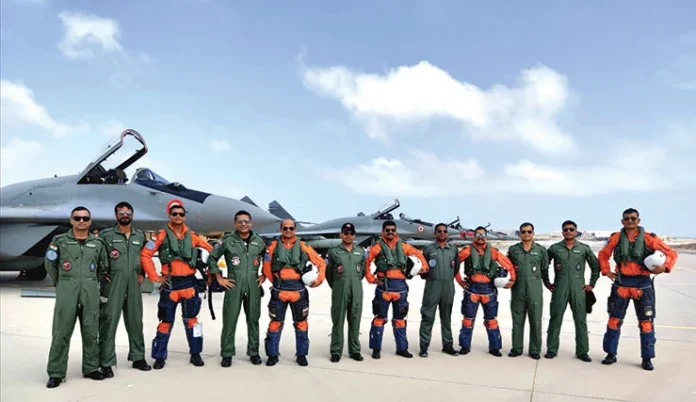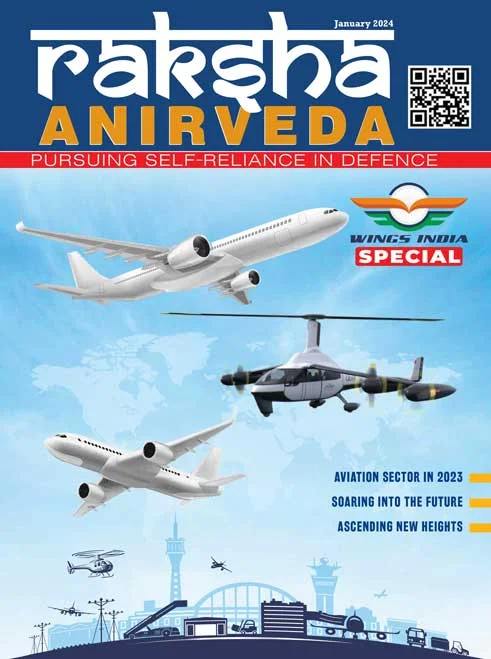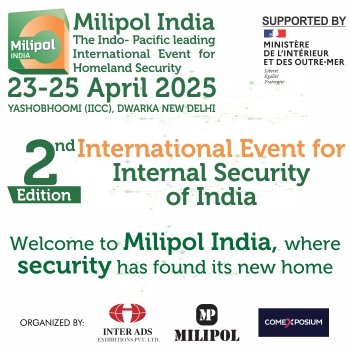“Tarang Shakti”, the largest air exercise of the Indian Air Force (IAF) involving 12 air forces, has been postponed to 2024 to accommodate certain nations. The exercise will feature fighter combat jets, large transport aircraft, force multipliers, helicopters, UAVs, and drones in action. IAF’s global engagements are on the rise. Three Rafale fighter jets of the IAF participated in the Bastille Day flypast over Champs Elysees in Paris on July 14, where Indian Prime Minister Narendra Modi was the guest of honour.
IAF-USAF Exercises
IAF and the US Air Force (USAF) have been participating in bilateral exercises sponsored by the US Pacific Air Forces (PACAF) under the Field Training Exercise (FTX) Cope India series, conducted in India. Starting in Gwalior in February 2004, the exercise was repeated in 2005, 2006, 2009, and 2018. Cope India-2023 was held in April this year across Kalaikunda, Panagarh, and Agra bases. It included air engagements, demonstrations, as well as lectures on aviation subjects. It helped both sides re-evaluate their intercept techniques and tactics. The IAF engaged with the USAF’s F-18s, F-15s, C-130 J, among others. The exercise also included airdropping training. IAF has also been participating in the USAF ‘Red Flag’ exercise at Nellis Air Force Base and Eielson AFB in Alaska, United States.
Garuda Series with France
The ‘Garuda’ series exercises with the French Air and Space Force (FASF) began in 2003 at Air Force Station Jodhpur, India. Subsequently, they were held in 2005, 2006, 2010, 2014, and 2019, with other locations including Istres and Mont-de-Marson in France and Kalaikunda in India. French and Indian Rafale fighter aircraft, French A-330 Multi Role Tanker Transport (MRTT) aircraft, Indian Su-30 MKI, LCA Tejas, Jaguar fighter aircraft, the Light Combat Helicopter (LCH), and Mi-17 helicopters have participated.
IAF also deployed combat enabling assets like Flight Refuelling Aircraft (FRA) and airborne early warning and control (AEW&C). The joint exercises aimed to augment operational capability and interoperability while sharing best practices. IAF participated in Exercise Orion at the Mont-de-Marsan airbase in France in April 2023.
Exercise ‘Pitch Black’ in Australia
The 17-nation multilateral exercise ‘Pitch Black’ was held in Darwin, Australia, in September 2022. It has been held every alternate year since 2006, hosted by the Royal Australian Air Force (RAAF). India began participating in 2018. The aim is to practice Offensive Counter Air (OCA) and Defensive Counter Air (DCA) combat in a simulated war environment. As the name suggests, it takes place in low-light conditions.
International air exercises not only enhance combat knowledge by adopting best practices from other air forces but also improve interoperability. Young aircrew gain valuable experience by flying aircraft from other air forces, and social interactions facilitate the exchange of ideas and knowledge
Participants included all Quad members and many from the Indo-Pacific, with over 100 aircraft and 2500 military personnel. The IAF fielded four Su-30 MKI and two C-17 aircraft. The forces took part in multi-aircraft combat drills by day and night, simulating complex aerial scenarios involving large formations and combined force engagements in a dynamic warfare environment. It also served as training for European countries’ ability to project power into the Indo-Pacific, providing exposure to a wide range of aircraft, including the F-35s.
IAF-RAF Exercises
IAF and the Royal Air Force (RAF) have been conducting Exercise ‘Indradhanush’ since 2006, held in both India and the UK. Indian Su-30 MKI and Mirage 2000 aircraft engaged with RAF’s Eurofighter Typhoons. Force multipliers from both sides participated, including Lockheed Martin C-130J Hercules transport aircraft and RAF Regiment Paratroopers. The exercise included close combat and Beyond Visual Range (BVR) engagements.
Other Major Air Exercises
The Republic of Singapore Air Force (RSAF) and the IAF have carried out bilateral exercise SINDEX since 2004, held at airbases in India and Singapore. RSAF’s F-16 C/D Fighting Falcons and F-5E Tiger fighter aircraft and the IAF’s Su-30 MKI, MiG 27, Mirage 2000, and Jaguar have participated.
Desert Eagle is a multilateral exercise organised by the United Arab Emirates Air Force. IAF has also participated in Exercise Eastern Bridge with Oman. Blue Flag is a military aviation exercise held by the Israeli Air Force. In July 2022, the IAF conducted a one-month-long engagement with the Egyptian Air Force (EAF) at the Egyptian Fighter Weapon School, located in Cairo West Air Force Base. This was a first-of-its-kind interaction for both air forces as it was conducted between their respective fighter weapon schools.
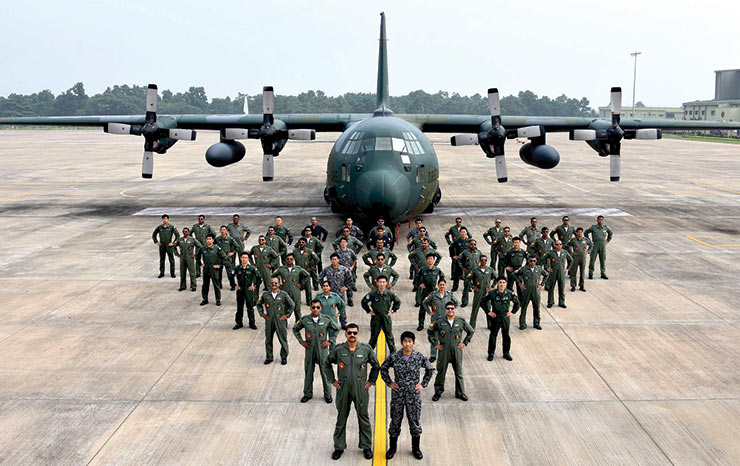
The Japanese Air Self Defence Force (JASDF) and IAF engaged in the bilateral air exercise ‘SHINYUU Maitri-18’ in 2018 at an IAF airbase in Agra. In January 2023, the bilateral air exercise ‘Veer Guardian 2023’ took place between the IAF and JASDF in Japan, featuring IAF’s Su-30 MKI and JASDF’s F-2 and F-15 aircraft. Additionally, the Hellenic Air Force hosted Exercise INIOCHOS at Andravida base in Greece in April-May 2023.
Planning and Executing Large Air Exercises
Organising large force, bilateral and multilateral air exercises involving major professional air forces necessitates meticulous planning and coordination, often spanning several months. Factors such as selecting suitable areas of operation with ample airbases, radar placements, para-drop zones, and, when live firing is involved, firing ranges must be considered. Planning must also account for a wide range of aircraft, from slow-flying helicopters and UAVs to high-speed fighters, all engaged in combat manoeuvres.
The exercise’s pace is set by initially conducting smaller packages and gradually increasing the complexity. Flight paths must be carefully de-conflicted, with air engagements closely monitored by ground-based and airborne radars. Radio procedures require coordination, mission commanders must be designated, and flight safety and operational issues must be managed. Each mission must have a clearly defined objective and detailed briefing, followed by comprehensive safety and operational debriefs. These exercises serve as a valuable source of lessons for both air and ground crews.
A Valuable Learning Opportunity
These exercises not only enhance combat knowledge by adopting best practices from other air forces but also improve interoperability. Young aircrew gain valuable experience by flying aircraft from other air forces and social interactions facilitate the exchange of ideas and knowledge. Special lectures are organised to educate participants, and these exercises are a crucial aspect of defence diplomacy. Cultural events and exchanges also play a role, embodying the saying “More you sweat in peace, less you bleed in war.”
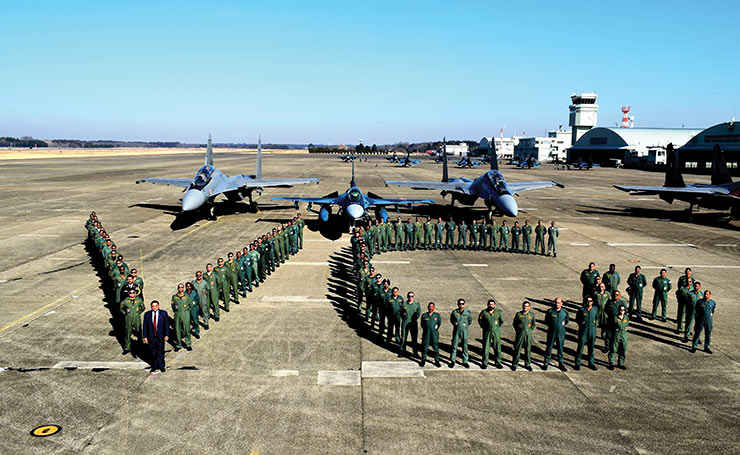
Given the continual induction of new operational equipment and changing personnel, these exercises need to be repeated every few years. They expose forces to large-scale engagements involving dissimilar aerial platforms, different tactics, and flight techniques under electronic and cyber warfare conditions. They serve as important tools not only for Air Warriors but also for improving interoperability between friendly air forces and sensitising joint staff and political leadership.
Significance of Air Power
Air power’s characteristics of speed, range, and elevation directly contribute to its capabilities. Military operations in the air and space differ significantly from those on land or at sea. Air power offers operational flexibility, responsiveness, precision, and mobility. It provides global reach and power and exploits the unique properties of its operating medium to offer distinct operational characteristics and capabilities, providing a wide range of military options to the nation.
The IAF benefits significantly from exposure to air exercises with major air forces worldwide. In recent years, both the frequency and number of air exercises have increased. It is a source of pride for India that Western air forces consistently rate IAF aircrew as highly professional and superior in air combat capabilities
Concentration of force, a product of air power’s responsiveness, mobility, and agility, is not solely measured in numbers but in achieving overwhelming effect at the critical time and location. Centralised control and decentralised execution are essential concepts in air power, necessitating training and testing. With long-range weapons and platforms, and in light of rapidly evolving technology, platform employment and tactics must adapt, underscoring the need for regular air exercises.
Key Takeaways
The IAF is transitioning from a continental air force to one with global reach, possessing trans-domain operational capabilities. It prides itself on reach, flexibility, versatility, responsiveness, and offensive lethality. To stay relevant across the spectrum of conflict in an interconnected world, exercises and doctrinal reviews are crucial.
The IAF benefits significantly from exposure to air exercises with major air forces worldwide. In recent years, both the frequency and number of air exercises have increased. Despite a brief pandemic-related slowdown, the pace has resumed. It is a source of pride for India that Western air forces consistently rate IAF aircrew as highly professional and superior in air combat capabilities. These air exercises contribute to a better understanding of the nuances of capabilities and the application of air power. The exercises not only elevate the combat prowess of the participating air forces but also showcase the spirit of camaraderie that transcends borders.
–The writer is a IAF veteran (PVSM AVSM VM VSM) and Director-General Centre for Air Power Studies (CAPS). The views expressed are of the writer and do not necessarily reflect the views of Raksha Anirveda
–The writer is a IAF veteran (PVSM AVSM VM VSM) and former Director-General, Centre for Air Power Studies (CAPS). The views expressed are of the writer and do not necessarily reflect the views of Raksha Anirveda


